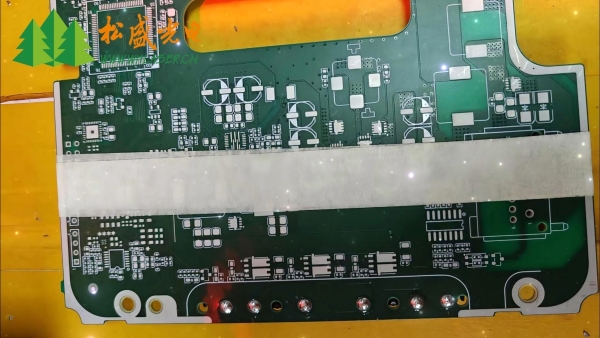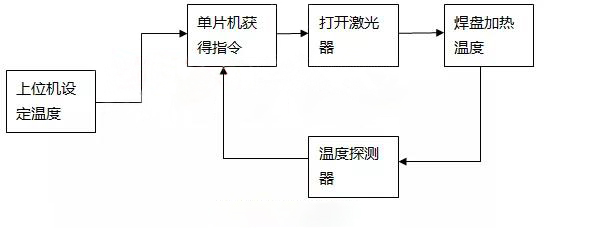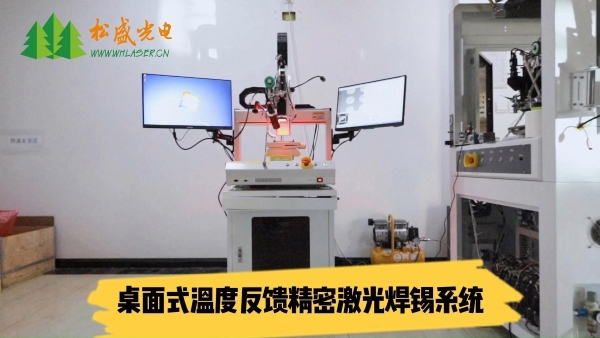The Critical Importance of Closed-Loop Temperature Control in Laser Soldering Core Value Proposition:
As 3C electronics and photonic components advance toward miniaturization, solder joint spacing has now broken the 0.2mm barrier while component thermal sensitivity continues to escalate. Conventional laser welding has long constrained high-end electronics manufacturing due to temperature control failures causing pad burn-through, cold joints, and thermal damage.
The advent of closed-loop temperature control technology is now propelling laser soldering into a new era of micron-level precision with ±2°C temperature stability - redefining quality standards for:

Principle of Temperature-Controlled Laser Soldering:
The temperature control principle operates through infrared detection that monitors the infrared thermal radiation from the workpiece in real-time, establishing a closed-loop control between the laser welding temperature and detected temperature. Through PID calculation and adjustment, the system effectively maintains the laser welding temperature within the specified fluctuation range. The host computer transmits the set temperature parameters to the microcontroller unit (MCU), which controls the semiconductor laser to emit the laser beam. The optical coupling system then directs the laser output to the precise welding zone while simultaneously measuring the temperature of the irradiated area. In this welding mode, the temperature data feeds back to the MCU, forming a closed-loop control that maintains the welding zone temperature within the predetermined range, thereby achieving precise temperature-controlled soldering.

Temperature Control Principle Diagram
Through this explanatory principle and graphical representation, the temperature control mechanism becomes clearly understandable. The laser enables rapid heating, while temperature-controlled laser soldering equipment provides superior protection for non-contact, batch soldering of electronic products.
Key Technical Elements of Closed-Loop Temperature Control:
High-Precision, High-Speed Infrared Thermometer:
Requires a sufficiently small measurement spot (matched to the laser spot), high sampling rate (kHz level), high accuracy (±2°C), and an optimized wavelength for the solder melting zone. Anti-ambient light interference and emissivity compensation capabilities are also critical.
Real-Time Control Algorithm:
Typically employs high-performance PID algorithms or their variants (e.g., fuzzy PID, adaptive PID), combined with feedforward control, to achieve fast, stable, and low-overshoot temperature regulation.
System Integration:
Coaxial design of the temperature measurement and laser optical paths (ensuring the measurement point coincides with the welding point), along with high-speed, low-latency communication between the thermometer, laser, and motion control system.

Songsheng Optoelectronic Temperature-Feedback Precision Laser Soldering System demonstrates high integration density, featuring a smaller laser spot size, higher energy density, and laser transmittance up to 90-95%. With accurate temperature control (±2°C) and faster response time (≤40μs), it fully complies with all laser soldering requirements for electronic component manufacturing.
Conclusion:
In modern electronics manufacturing that pursues high precision, reliability, miniaturization, and automation, closed-loop temperature control constitutes the indispensable core of laser soldering technology. It serves not only as the key to ensuring solder joint quality (strength, appearance, reliability), but also as the foundation for protecting expensive components, overcoming production variability, improving yield and efficiency, enabling complex processes, and meeting traceability requirements. It can be stated that without mature and reliable closed-loop temperature control technology, laser soldering would be unable to fully utilize its advantages of precision localized heating, nor could it achieve widespread adoption in high-end electronics manufacturing. This technology represents one of the core differentiators between conventional laser welding equipment and truly high-performance, intelligent laser soldering systems.
Contact: Mr.Xiao
Phone: +86-13385280662
E-mail: market001@whlaser.cn
Add: Room 02, Floor 5, Building 9, Gezhouba Sun City, No. 40, Gaoxin 4th Road, Donghu New Technology Development Zone, Wuhan